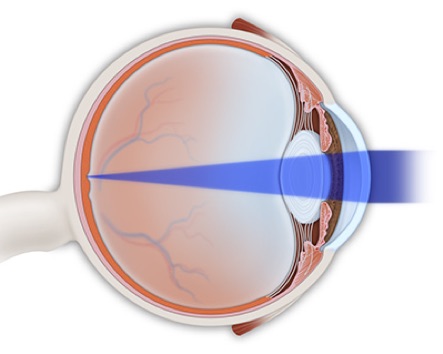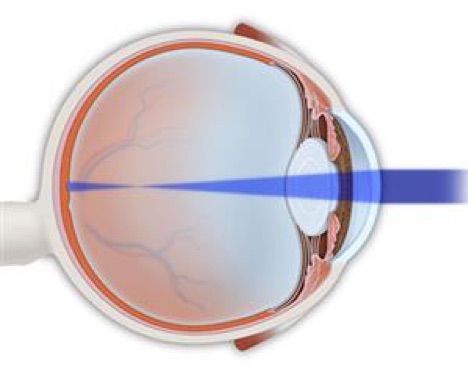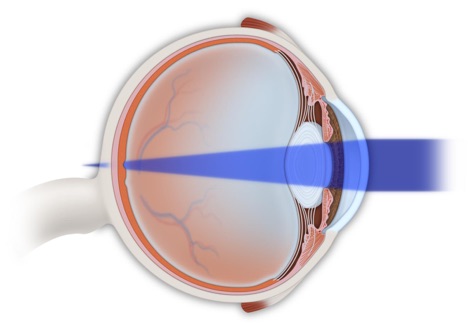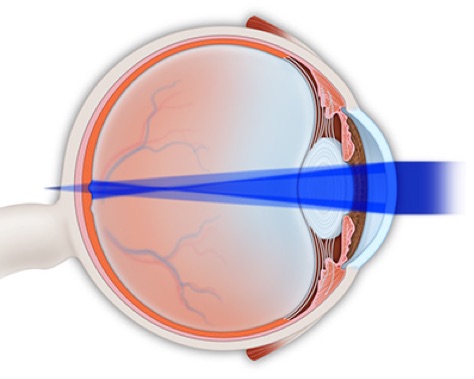Refractive Errors
Overview
Emmetropia
Refers toan eye with no refractive errors. Image is directly focused on the retina and corrective glasses are not needed to obtain clear vision.

Myopia
Also known as nearsightedness, myopia is a refractive error in which far ob-jects appear blurry. Because myopes have longer eyeballs, light is focused in front of the retina causing unclear distance vision. This condition can be corrected through glasses, contacts or even refractive surgeries. Additionally, myopia can be a risk factor for conditions like retinal tears, detachments and other degenerative changes. Therefore, it is essential to get a yearly dilated exam with a provider to monitor any changes in the back of the eye.

Hyperopia
Also known as farsightedness, hyperopia is a refractive error in which near objects appear blurry. Because hyperopes have shorter eyeballs, light is focused behind, instead of on the retina. This creates blurry near vision and if not corrected with glasses or contacts, it can induce eye strain, headaches or eye pain.

Presbyopia
Presbyopia is a consequence of aging and usually begins in our 40s. This is a progressive worsening of the eyes’ capability to accommodate due to the loss of lens flexibility. If you’re a member of this cohort, you might notice that you hold books or devices further away to be able to see them clearly. Ultimately, your arms will not be long enough, and your eyes will require magnification to obtain clear near vision. If you are nearsighted, you will be able to see near objects without correction but will lose the ability to do close-up work when utilizing your distance glasses.
Regular Astigmatism
This is a refractive error that is caused by an irregularly shaped cornea or the curvature of the lens in our eyes. Due of this distortion, light rays cannot come to a simple point of focus on the retina. This results in blurred vision and can be easily corrected by glasses, contacts or refractive surgery.

Irregular Astigmatism
Corneal topographies are used to diagnose this condition. Un-like regular astigmatism, this is a nonuniform corneal steepening that can be caused by corneal scars, eye surgeries (i.e. LASIK), or keratoconus. Although it be difficult to ob-tain optimal vision with cylindrical lenses, rigid gas permeable and/or scleral lenses can correct visual acuity. If indicated, procedures like Collagen Cross-Linking or Intacs are available to halt further progression.
